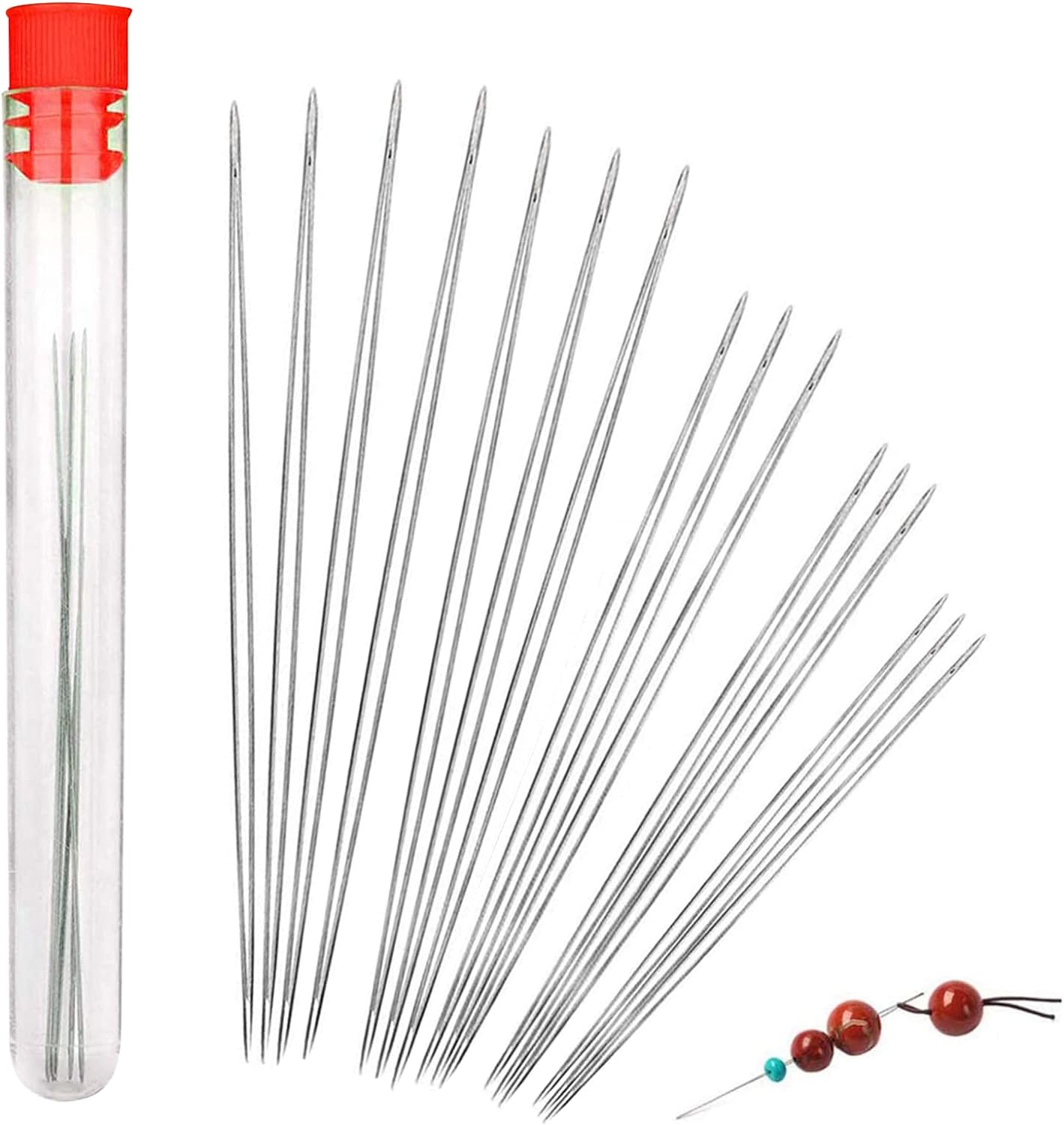Introduction to Beading Needles
What Are Beading Needles?
Beading needles are specialized tools specifically designed for the intricate task of threading beads onto string or thread. Unlike regular sewing needles, beading needles are much thinner and longer, allowing for precision and flexibility when working with small beads and fine thread. These needles are essential for anyone involved in beadwork, whether it’s simple stringing or intricate bead weaving.
The primary feature that distinguishes beading needles from other types of needles is their narrow diameter. This slim design enables them to pass through the small holes of beads multiple times without enlarging the hole or damaging the bead. The length of the needle also varies, providing options for different types of projects and bead sizes. Additionally, the eye of a beading needle is typically thin and elongated, ensuring it can accommodate fine beading thread or wire without adding bulk.
Understanding the purpose and design of beading needles is the first step in appreciating their indispensable role in jewelry making. These needles are not just tools but extensions of the artisan’s hand, allowing for the creation of detailed and intricate designs. By enabling precise bead placement and secure threading, beading needles make it possible to bring creative visions to life in a durable and aesthetically pleasing way.
Moreover, the variety of beading needles available caters to different needs and preferences, making them versatile tools for various beadwork techniques. From simple stringing to complex bead embroidery, the right needle can significantly impact the quality and ease of the craft. By exploring the different types and uses of beading needles, artisans can enhance their skills and expand their creative horizons.
Historical Significance of Beading Needles
The history of beading needles is intertwined with the history of beads themselves, which dates back thousands of years. Early humans used natural materials such as bones, shells, and plant fibers to create beads and rudimentary needles. These ancient tools allowed for the creation of jewelry, clothing embellishments, and decorative items, reflecting the cultural and artistic practices of their time.
As civilizations advanced, so did the techniques and materials used in beadwork. Metal needles emerged as valuable tools for artisans, allowing for more precise and intricate designs. In ancient Egypt, beads and beading needles were highly prized, often used in the creation of elaborate jewelry and ceremonial attire. The quality and craftsmanship of these items reflected the wealth and status of their owners.
Throughout history, beading needles have evolved to meet the needs of different cultures and artistic traditions. In medieval Europe, the introduction of glass beads and finer threads required thinner, more durable needles. This period saw a surge in beadwork, with intricate designs adorning religious garments, tapestries, and personal accessories. The needle’s role in these creations was crucial, facilitating the detailed placement of beads to create patterns and images.
In modern times, the evolution of materials and manufacturing techniques has led to the production of high-quality beading needles that cater to both beginner and advanced artisans. These needles are crafted with precision, ensuring they can handle the demands of contemporary beadwork. The historical significance of beading needles highlights their enduring importance in artistic expression and craftsmanship. By understanding this history, artisans can appreciate the legacy of the tools they use and the cultural significance of their craft.
Types of Beading Needles
Standard Beading Needles
Standard beading needles are the most commonly used type in beadwork. These needles are typically long and thin, ranging from 1.5 to 5 inches in length, and are designed to accommodate a variety of bead sizes. The thinness of the needle allows it to pass through beads multiple times, which is essential for creating sturdy and intricate designs.
One of the key features of standard beading needles is their flexibility. Unlike stiffer needles used for other types of sewing, beading needles can bend slightly without breaking, making it easier to maneuver through tight spaces and complex patterns. This flexibility is particularly useful in bead weaving and embroidery, where precision and dexterity are crucial.
Standard beading needles come in different sizes, typically ranging from size 10 to size 15. The size of the needle corresponds to its thickness, with higher numbers indicating thinner needles. For example, a size 10 needle is thicker and more durable, suitable for larger beads and heavier threads. In contrast, a size 15 needle is extremely thin, ideal for delicate beads and fine threads.
Understanding the different sizes and uses of standard beading needles allows artisans to choose the right tool for their specific project. By selecting the appropriate needle size, they can ensure that their beadwork is both beautiful and durable. The versatility and reliability of standard beading needles make them essential tools for any beadworker’s toolkit.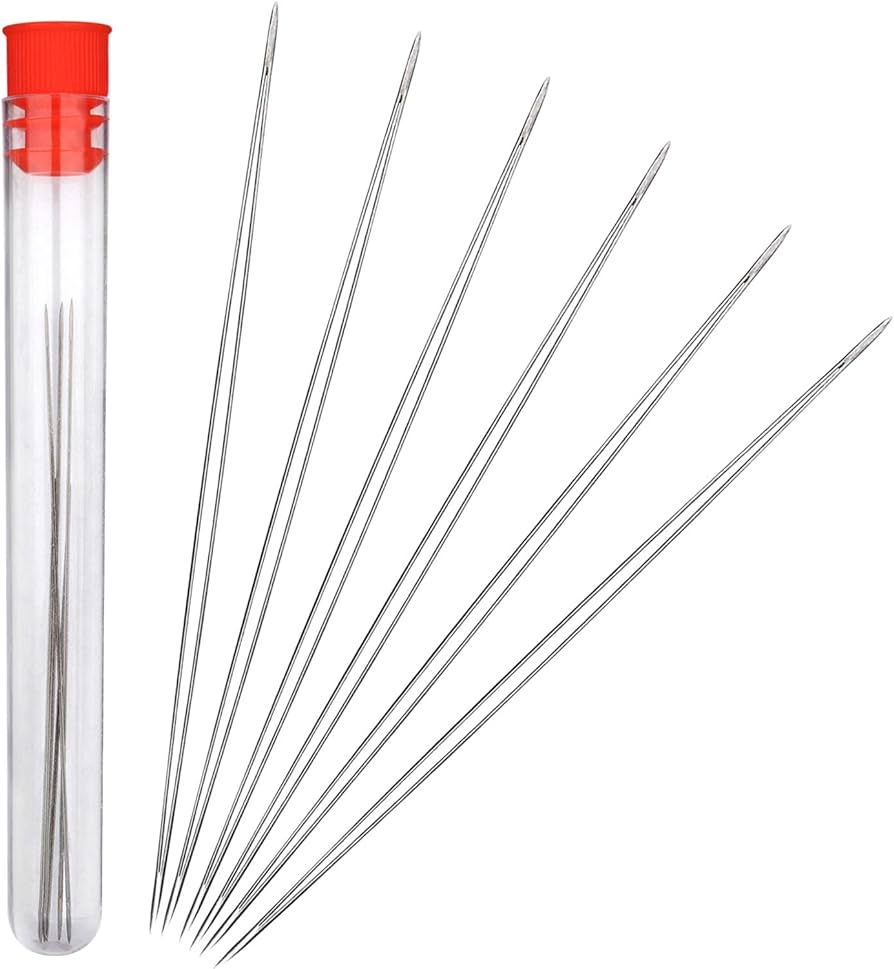
Big Eye Needles
Big eye needles are another popular type of beading needle, known for their unique design and ease of use. These needles have a large, flexible eye that runs almost the entire length of the needle, making it incredibly easy to thread. This feature is particularly beneficial for beginners or those who struggle with threading fine needles, as it eliminates the need for precise threading.
The large eye of big eye needles can accommodate multiple thread types and thicknesses, providing versatility for different projects. Whether using thick beading thread, wire, or even multiple strands, big eye needles offer the flexibility needed to handle various materials. This adaptability makes them a favorite among artisans who work with diverse bead sizes and types.
Big eye needles are available in different lengths, typically ranging from 2 to 5 inches. Their thin and flexible design allows them to pass through small bead holes and intricate patterns with ease. The combination of a large eye and thin needle makes them ideal for bead stringing, weaving, and embroidery, offering both convenience and precision.
Understanding the advantages of big eye needles highlights their value in beading projects. Their user-friendly design and versatility make them an excellent choice for both beginners and experienced artisans. By incorporating big eye needles into their toolkit, beadworkers can streamline their process and enhance their creativity.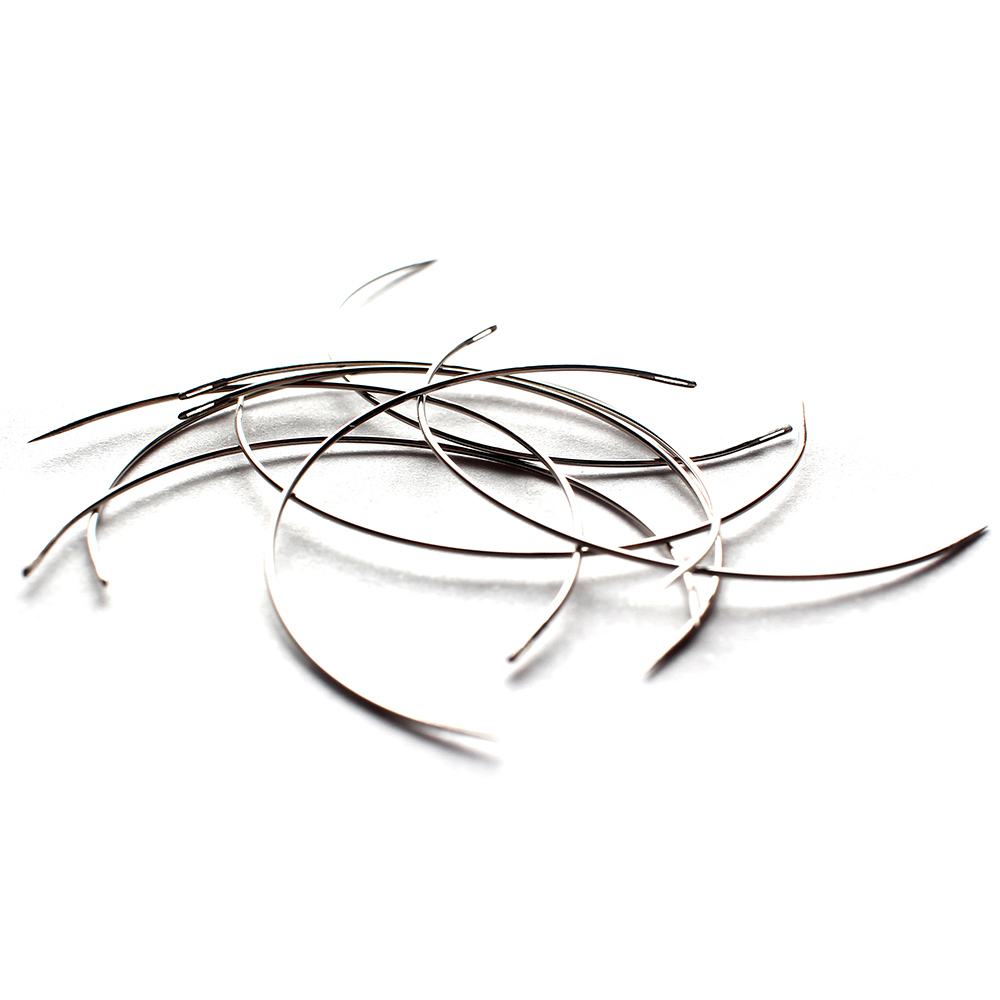
Specialty Beading Needles
In addition to standard and big eye needles, there are various specialty beading needles designed for specific techniques and materials. These needles cater to the unique requirements of different beadwork styles, offering specialized features to enhance the crafting experience.
One example is the twisted wire needle, which is made of fine, twisted wire with a collapsible eye. This type of needle is highly flexible and can fit through tiny bead holes, making it ideal for intricate beadwork. The collapsible eye allows for easy threading of multiple strands, making it versatile for various projects.
Another specialty needle is the curved beading needle, designed for bead embroidery and applique. The curved shape allows the needle to easily navigate through fabric and beads, creating smooth stitches and even patterns. This needle is particularly useful for creating dimensional bead designs on textiles and garments.
Self-threading needles are another valuable addition to the beading toolkit. These needles have a small slot near the eye that allows the thread to be easily inserted with a simple push. This feature is especially helpful for those with limited dexterity or vision, providing a convenient and efficient threading process.
Understanding the different types of specialty beading needles highlights their importance in achieving specific design goals. Each needle offers unique features that cater to different techniques and materials, providing artisans with the tools they need to bring their creative visions to life.
Tips for Choosing the Right Beading Needle
Consider the Bead Size
When choosing a beading needle, one of the most important factors to consider is the size of the beads you will be working with. The needle must be thin enough to pass through the bead holes without causing damage or enlarging the hole. For larger beads, a thicker needle may be suitable, while smaller and more delicate beads require a finer needle.
Understanding the relationship between bead size and needle size is crucial for achieving precise and secure beadwork. For example, size 10 needles are ideal for larger beads like seed beads and pony beads, while size 13 or 15 needles are better suited for tiny beads like Delicas and Charlottes. Using the correct needle size ensures that the beads are strung or woven smoothly, without compromising the integrity of the design.
Additionally, it’s important to consider the type of project you are working on. For bead weaving or embroidery, choose a needle that can pass through the beads multiple times, as these techniques often require multiple thread passes. For bead stringing, a slightly thicker needle may provide the necessary strength and stability.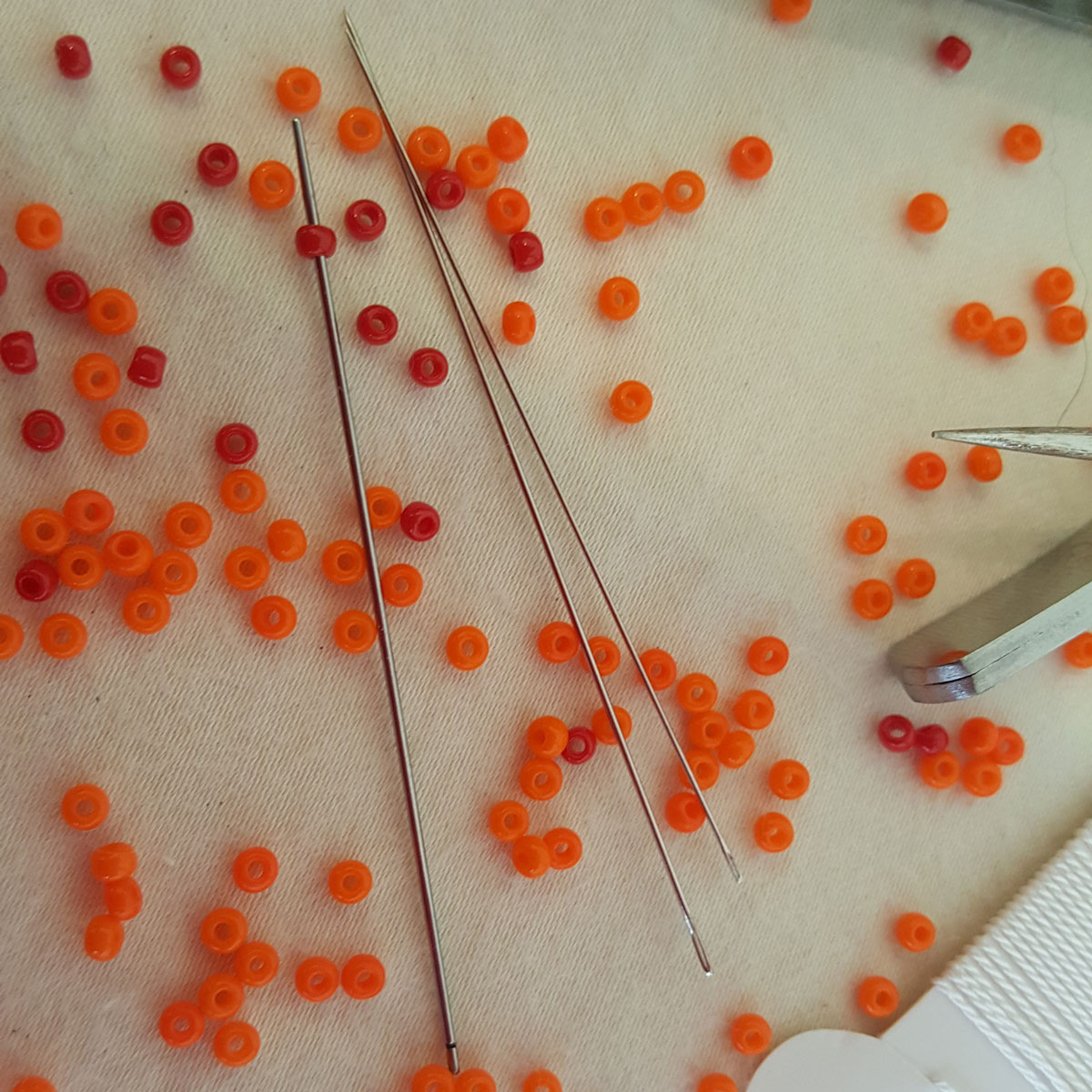
Understanding the importance of bead size when choosing a needle ensures that your beadwork is both beautiful and durable. By selecting the right needle size, you can enhance the quality and precision of your designs, creating stunning pieces that stand the test of time.
Consider the Thread Type
Another crucial factor in choosing the right beading needle is the type of thread you will be using. Different threads have varying thicknesses and properties, which can impact the needle’s performance and compatibility. Matching the needle size to the thread ensures that the thread passes smoothly through the beads and creates secure, consistent stitches.
For example, fine beading threads like Nymo or FireLine require thin needles to prevent friction and wear on the thread. A size 12 or 13 needle is ideal for these threads, providing a balance of flexibility and strength. On the other hand, thicker threads like silk or nylon may require a size 10 or 11 needle to accommodate the added bulk.
Understanding the relationship between thread type and needle size is vital for achieving the desired results in your beadwork. The right combination ensures that the thread passes smoothly through the bead holes without adding unnecessary tension or causing fraying. This consideration is particularly important for intricate bead weaving and embroidery projects, where precision and consistency are key.
In addition to thread thickness, consider the thread’s flexibility and durability. Some specialty threads may require specific needle types, such as twisted wire or self-threading needles, to handle their unique properties. By choosing the appropriate needle for your thread, you can enhance the overall quality and longevity of your beadwork.
Consider the Project Type
The type of project you are working on also influences the choice of beading needle. Different projects have unique requirements and challenges, which can impact the needle’s performance and suitability. By considering the specific needs of your project, you can select a needle that enhances your efficiency and precision.
For example, bead weaving projects often require multiple passes through each bead, necessitating a thin and flexible needle. Standard beading needles in sizes 11 to 13 are ideal for these projects, providing the necessary flexibility and precision. For bead embroidery, a curved needle may be more suitable, as it allows for smooth navigation through fabric and beads.
Understanding the project’s requirements ensures that you choose a needle that meets your specific needs. This consideration enhances your efficiency and precision, allowing you to create high-quality beadwork. Whether working on intricate designs, large bead arrangements, or fabric embellishments, selecting the right needle is crucial for achieving your creative vision.
Additionally, consider the project’s complexity and duration. For lengthy projects, a comfortable and easy-to-thread needle, such as a big eye or self-threading needle, may enhance your experience. These needles reduce fatigue and streamline the process, allowing you to focus on your creativity.
By considering the project type, you can select a beading needle that aligns with your goals and enhances your beadwork experience. Understanding the unique requirements of your project ensures that you choose a needle that meets your specific needs and maximizes your creative potential.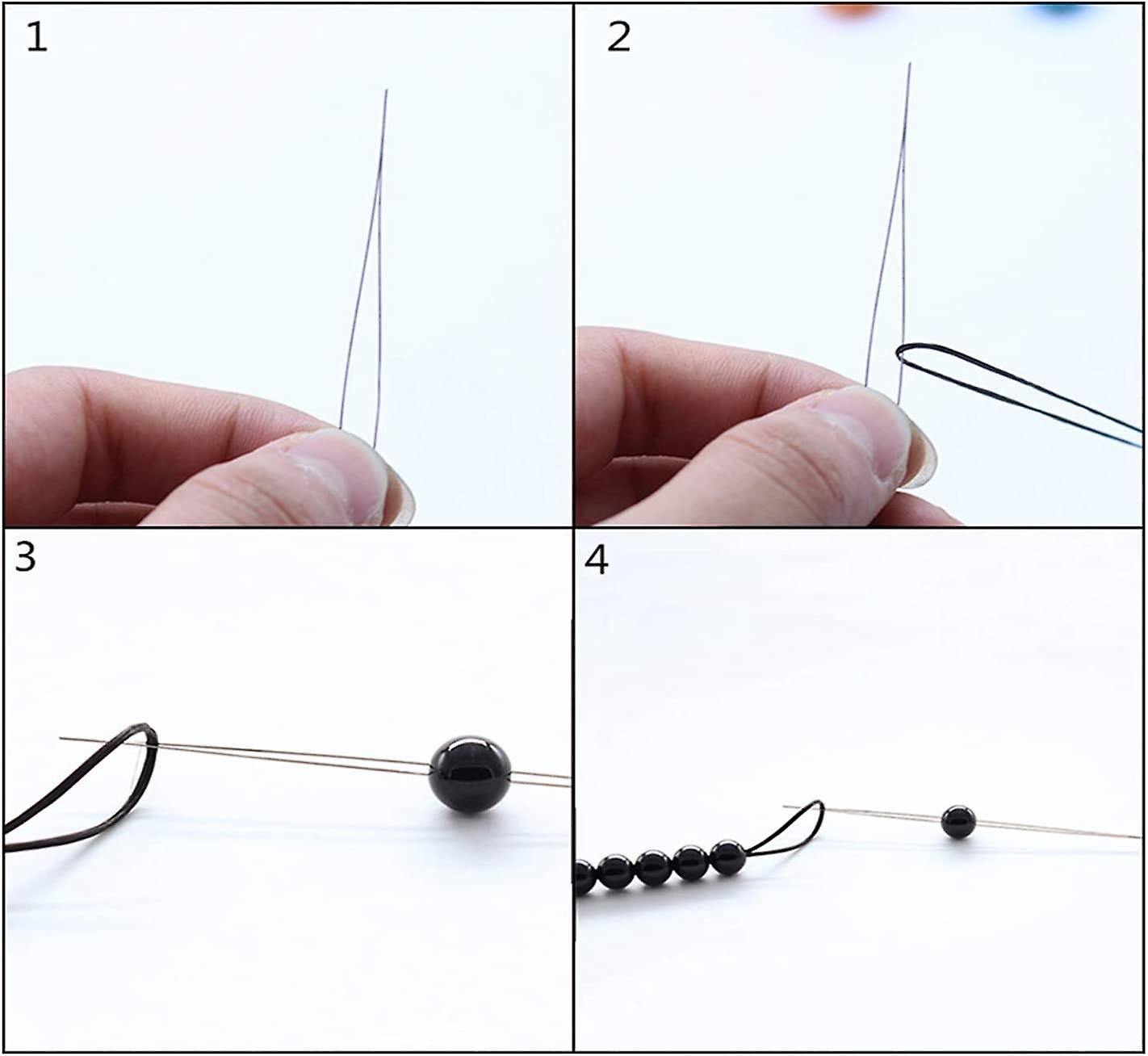
Conclusion: The Essential Role of Beading Needles
In conclusion, beading needles are indispensable tools for jewelry makers and artisans involved in beadwork. Understanding the different types and sizes of beading needles allows you to choose the right tool for your specific project, ensuring precision and quality. From standard beading needles to specialty options like big eye and curved needles, each type offers unique features that enhance your beadwork experience.
By considering factors such as bead size, thread type, and project requirements, you can select a needle that meets your specific needs and enhances your creativity. The right needle not only ensures smooth and secure beadwork but also enhances your efficiency and enjoyment of the craft.
Embracing the versatility and functionality of beading needles allows you to expand your creative horizons and achieve stunning results. Whether working on intricate designs, fabric embellishments, or simple stringing projects, beading needles play a crucial role in bringing your artistic visions to life. By understanding their essential role and exploring the different options available, you can elevate your beadwork to new levels of beauty and precision.
